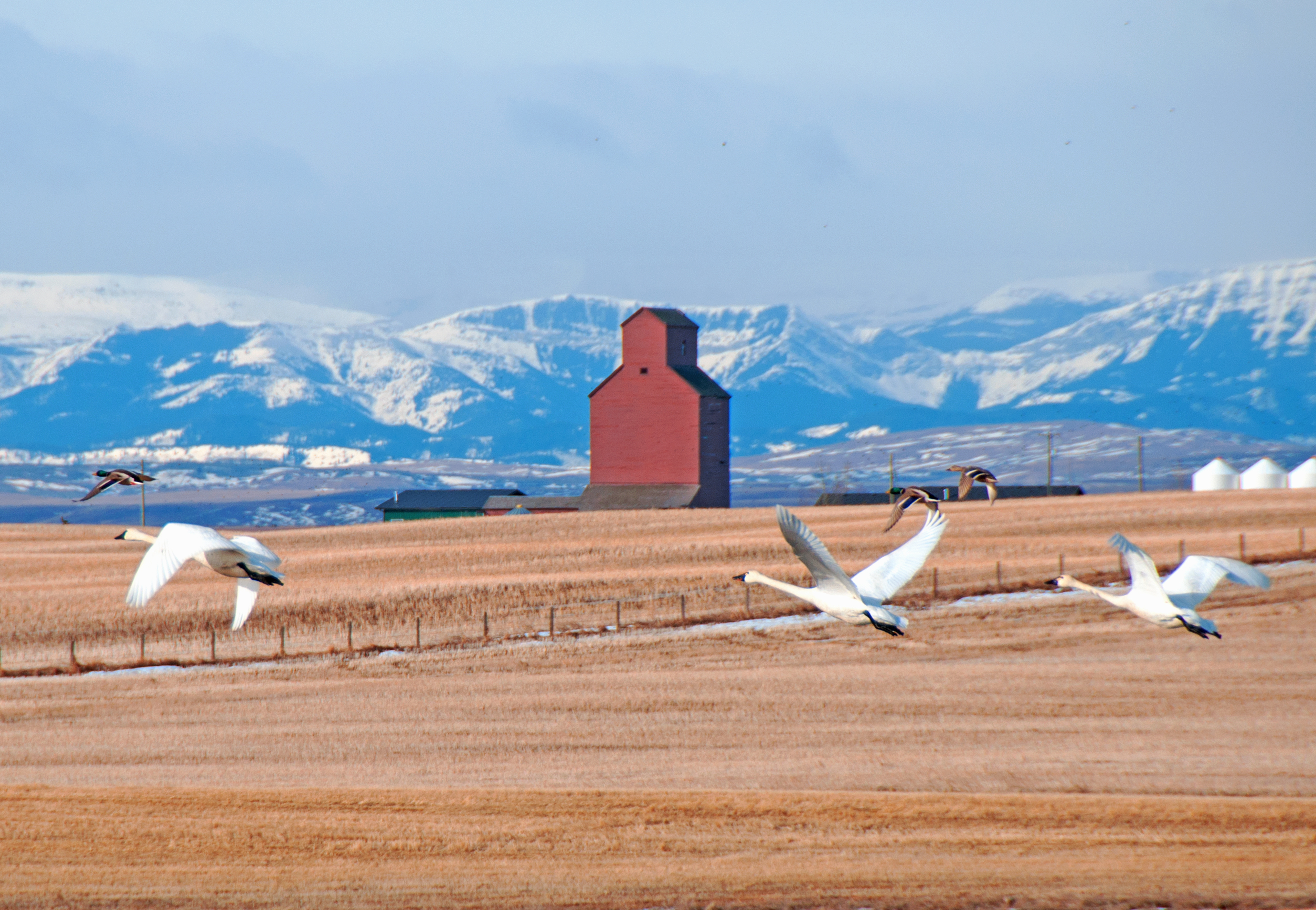After passing Utah’s Swan Hunter Orientation Course, and while nervously waiting for the draw results, my son and I turned our attention to learning as much as we could about hunting techniques for swan.
My first recourse was Troy Burgess, founder and president of Wasatch Wigeons Association, a DOA pro-staffer, and my go-to-guy on all things waterfowl.
I’ve had the privilege of hunting alongside Troy and his black Lab, Raz, on many occasions and working with him on many WWA habitat and conservation projects. He says hunting swans is unique because “it’s a specialty hunt. It’s a rarity to have the opportunity to harvest one.”
Another hunting partner and swan expert is Dustin Richardson, pro-staffer for GK Calls, who put it this way: Swan hunting “can be the most stressful hunt or they can be the easiest bird to hunt. One day you can’t get near them, the next day you can’t keep them off.”
According to Burgess, critical advice for successful swan hunting includes: “Scout the birds, find out where they are, pattern them, be well-concealed, use decoys. [Swans are] very predictable birds, if they are going out over a certain location in the morning they will most likely return over that same spot in the evening.”
Richardson agrees, as does Blair Stringham from Utah’s DWR. Stringham notes that Utah provides swan counts weekly on the state’s website to let hunters know when the swans are in the marshes.
Both Burgess and Richardson say that the most thrilling way to hunt swans is over decoys.
“They’re so big, it’s incredible,” says Richardson.
Burgess suggests at least four or five decoys. Swan decoys can be expensive, so oversized Canada goose decoys painted white with a black bill will suffice.
“The best decoying waterfowl,” says Richardson, who likes to use very large spreads, sometimes as many as 60 blocks. “Go big or go home, right?”
“Easier than geese but not as easy as spoonies or wigeon,” chuckled Burgess.
To add some motion to your spread, Burgess also suggests blowing up a few white kitchen garbage bags, tying them off, and anchoring them among your full-body dekes.
Burgess, Richardson, and Stringham all agree that getting birds over decoys has one very important benefit—better opportunity for clean, ethical shots.
Says Burgess: “Pass shooting cripples more birds because you are often shooting at longer distances, and even if you don’t know it, you may cripple birds.”
Adds Richardson: “Realize they are a big bird and they look closer than they actually are.”
Stringham concludes: “[Decoying] usually provides easier, closer shots.”
As far as guns and loads, Burgess recommends 12 gauges with 3-inch loads in BB (no smaller than 2s). Richardson uses 3-inch 2s for all his waterfowl hunting—teal to tundras, they’re the “best waterfowl load, period.”
We’re using my 20-gauge 870 with a 26-inch barrel, 3-inch 2s, and an extra-full choke. Having been with Troy before when he was pursuing swans, I’m confident he’ll get birds in the decoys and Henry won’t need to take a shot past 30 yards.
Now we needed to figure out what we’d do if we actually got a bird. You don’t hear many folks talk about the “delicious swan we had for dinner.” Eating what we kill is important, so I had some research to do to find out how we could best prepare a swan for the table. Turns out it’s not nearly the undertaking I’d anticipated.
Eating swan goes back hundreds of years when they were considered a delicacy allowed only to the Royal Family in England. In fact, the Royals own all the swans in England by tradition and right. The tradition of keeping the swans for the Royals continues to this day, with an annual count of the swans on the Thames presided over by The Queen’s Swan Marker.
After a little searching, it was clear that any duck or goose recipe would suffice for swan. I was particularly intrigued by Hank Shaw’s observations and recipes from Hunter, Angler, Gardner, Cook. After reading of his own Utah swan hunt, I decided I’d find a recipe on his blog that looked interesting. When I discovered his goose pastrami recipe, I knew my search was over. It looked simple enough, with ingredients I could dig up without too much trouble.
After finding a tasty recipe, it wasn’t long before we got the emails. And, for the second year in a row, Henry drew a tag! Last year he was sick and unable to go, so he was doubly excited about his extraordinary luck. I’ll have to wait until next year.

